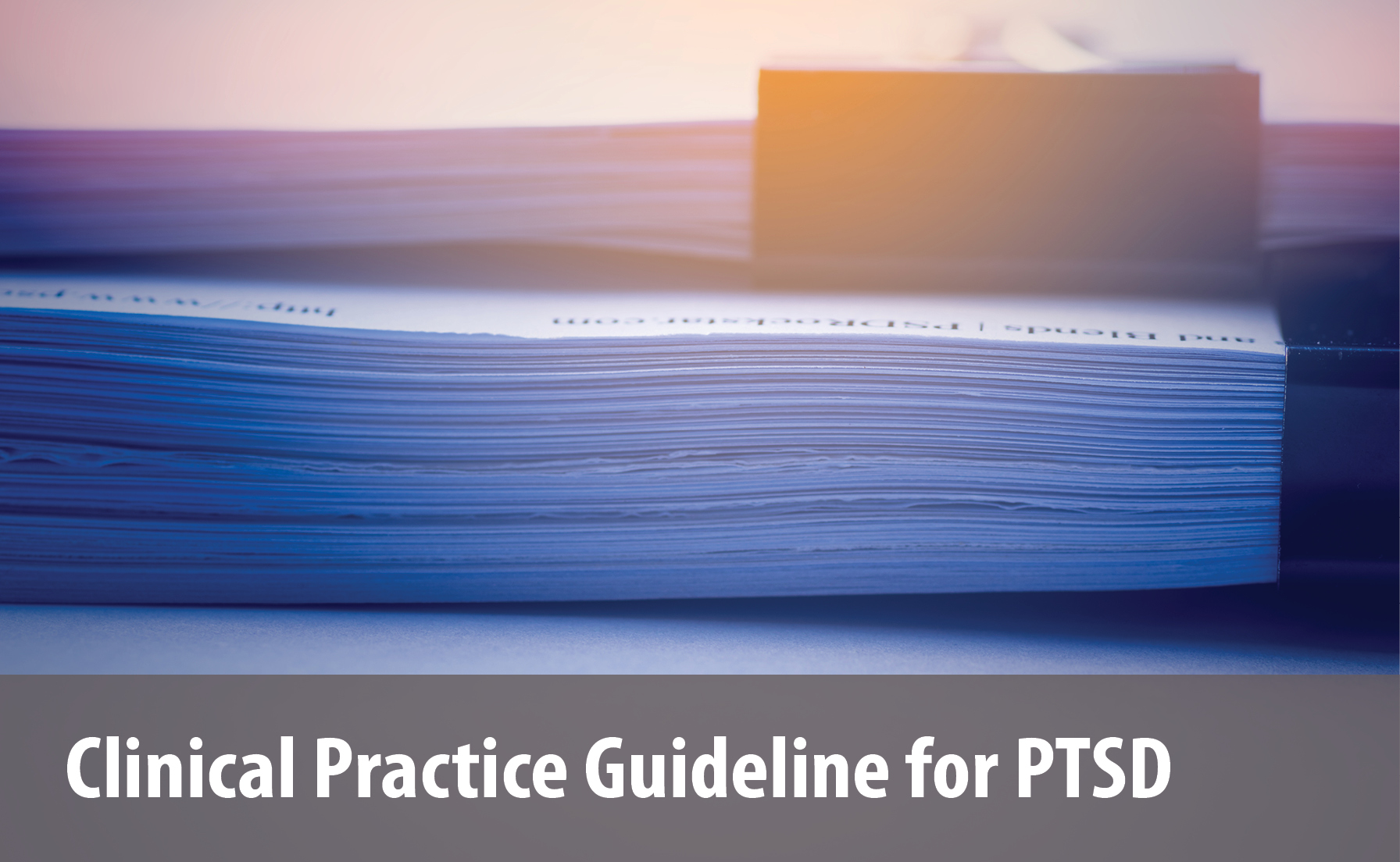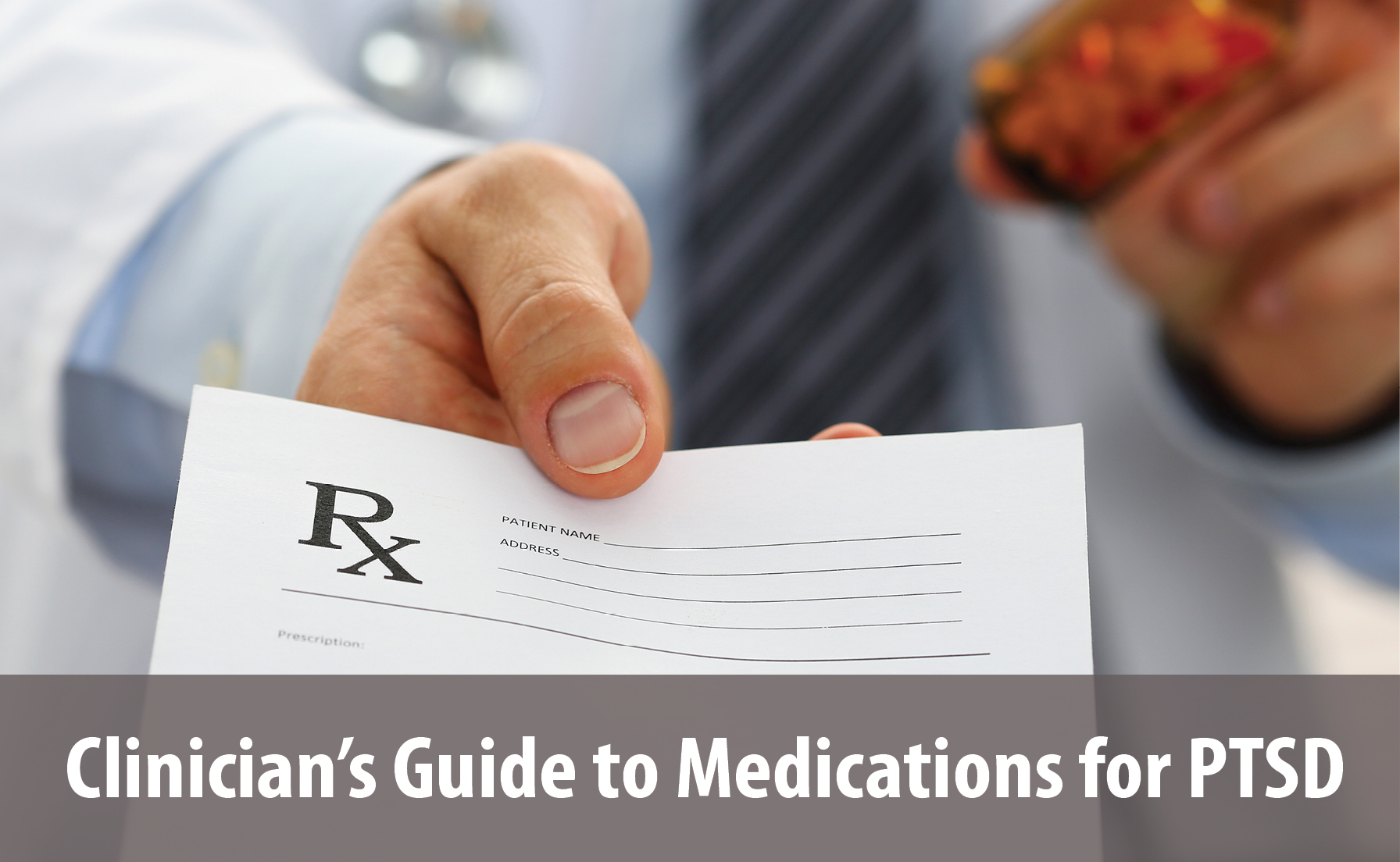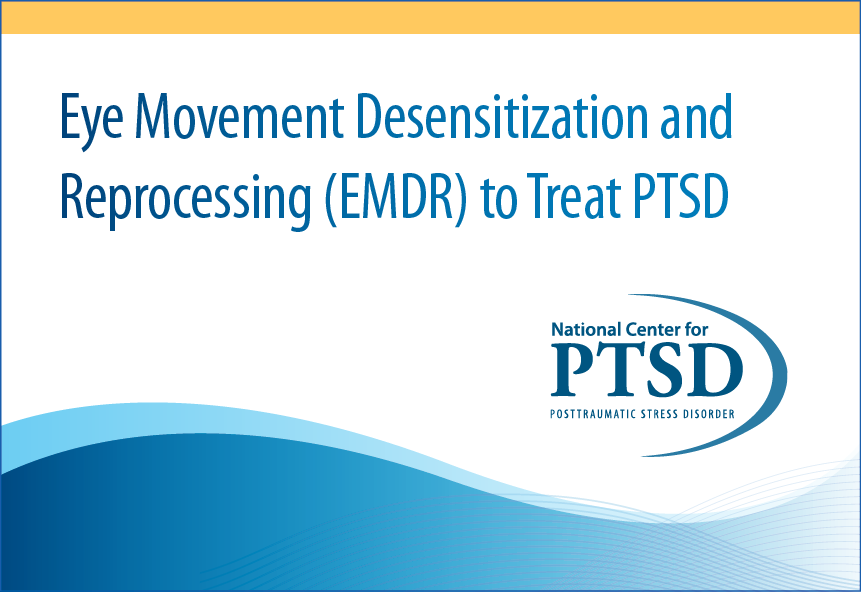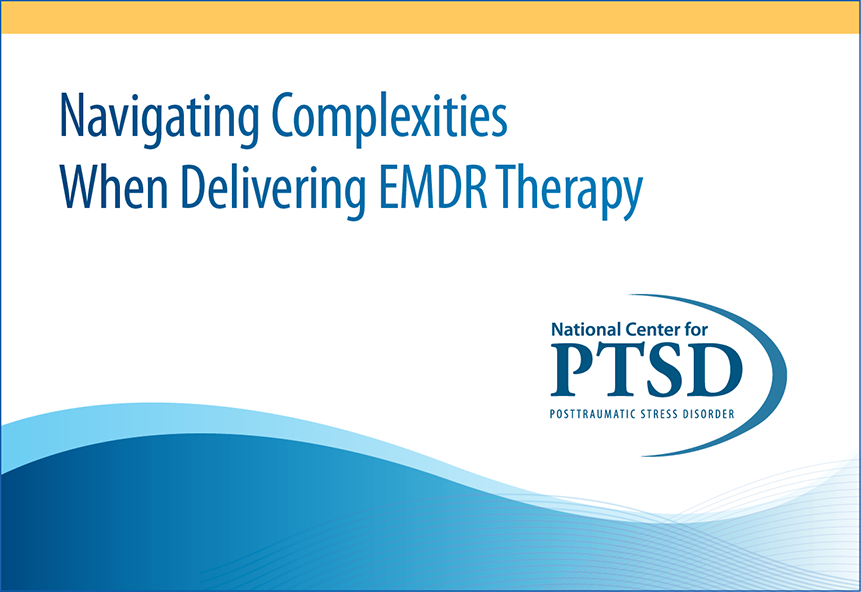PTSD: National Center for PTSD
Eye Movement Desensitization and Reprocessing for PTSD
Eye Movement Desensitization and Reprocessing (EMDR) for PTSD
Eye Movement Desensitization and Reprocessing (EMDR) is a trauma-focused psychotherapy that is one of the most studied treatments for PTSD. A large number of studies demonstrate it is effective to treat PTSD when administered over approximately 3 months. EMDR has the strongest recommendation for being an effective treatment in most clinical practice guidelines for the treatment of PTSD.
Continuing Education Course
Eye Movement Desensitization and Reprocessing (EMDR) to Treat PTSD
This PTSD 101 online course describes EMDR protocol, including strategies for shared decision-making.
Theoretical Model
EMDR is based on the theory of Adaptive Information Processing (AIP; 1). According to AIP, humans process new experiences by connecting and integrating them with related emotions and information in existing memory networks. This helps individuals to make sense of their experience. Useful new information is added to existing memory networks (i.e., learning), and extraneous material is discarded. PTSD can occur when an experience is inadequately processed and is consequently stored dysfunctionally. The original, often fragmented perceptions of the stressors are not integrated with other memories, but rather held separately in a state-specific form with the original distress, making it difficult to resolve the distress.
PTSD symptoms are considered to result from the activation of these inadequately processed memories. Grounded in the AIP model, the goal of EMDR is to first access this inadequately processed information, then use alternating bilateral stimulation to re-stimulate the ability to process distressing events. This allows the memory to become integrated into the patient's larger memory system which enables reduction of PTSD symptoms (1).
In This Article
Session Content
EMDR is typically administered in weekly, up to 90-minute individual sessions over the course of approximately 3 months. The exact length of treatment can vary based on a patient's needs and response, with both shorter and longer treatment periods possible.
The patient is first introduced to the theory and process of EMDR, including a thorough history taking, and taught techniques to help manage stress reactions during treatment. The patient is also introduced to bilateral stimulation such as eye movements or tapping which are used to help with trauma processing. In the assessment phase, the patient identifies a target image, often the most distressing image from a trauma memory, and a negative cognition about the self (e.g., "I am powerless," or "I can't trust anyone,") related to the target image. Patients rate their current distress level and emotional and physical sensations cued by the distress.
The patient next identifies what they would prefer to believe (e.g., "I now have choices," or "I can choose whom to trust,") and rates the validity of the positive cognition. Then, in the desensitization phase, the patient focuses on the target memory while the therapist leads the patient through bilateral stimulation sets (20-40 back and forth movements).
Bilateral stimulation continues as the patient notices and incorporates new insights, associations, affect and physical sensations until the distress related to the traumatic memory is greatly reduced and the more adaptive self-appraisal takes hold. Body scanning is used to see if any unpleasant bodily sensations remain in association with the event. Once distress is alleviated and the more adaptive self-appraisal feels true to the patient, the therapist and patient can decide to move on to another target memory if PTSD symptoms persist. The process is repeated with current situations that trigger distress and with imagined situations the patient believes may cause distress in the future.
Overall and Relative Effectiveness
To date, there have been 35 randomized controlled trials (RCTs) where one or more of the treatment arms included EMDR (2) with adults in the U.S. and in other countries (e.g., Netherlands, Indonesia; (3)), with more studies in progress. Samples have included refugees, sexual assault survivors, and those with mixed trauma types. Early trials in the 1990's were less methodologically rigorous, resulting in conflicting results regarding how quickly the treatment worked and its efficacy. In the last several years, there have been more rigorous studies that support EMDR's efficacy using a 3-month protocol. RCTs have compared EMDR to waitlist/usual care and other trauma focused and non-trauma focused psychotherapies. Recent meta-analyses (e.g., 4-8) suggest that EMDR produces moderate to strong treatment effects in regard to PTSD symptom reduction, depression symptom reduction and loss of PTSD diagnosis (e.g., 7).
A single study comparing EMDR to medication (fluoxetine) found that EMDR was associated with greater symptom reduction than medication (9).
A review by the Agency for Healthcare Research and Quality (AHRQ: 6), which used extensive criteria for evaluating study quality, included 10 RCTs of EMDR. The review concluded that there is moderate grade evidence to support the efficacy of EMDR for reduction of PTSD symptoms and loss of PTSD diagnosis. The AHRQ review concluded that the head-to-head evidence was insufficient to make determinations regarding comparative effectiveness among trauma focused PTSD treatments such as EMDR.
EMDR in Clinical Practice Guidelines
EMDR has the highest recommendation across most clinical practice guidelines, including the Veterans Affairs/Department of Defense (VA/DoD) Clinical Practice Guideline for Management of PTSD (10), the International Society for Traumatic Stress Studies (ISTSS; 11), United Kingdom's National Institute for Health and Clinical Excellence (NICE; 12), and Australian National Health and Medical Research Council (13). The American Psychological Association (APA) gave EMDR a conditional rating (14).
Research With Military Personnel and Veterans
Most research on EMDR has been conducted in non-Veteran civilian samples. A recent review identified 4 RCTs examining EMDR in military or Veteran populations (15). All of these studies were published before the year 2000 and only one study included a full course of treatment (16). The others were short duration studies (1-3 EMDR sessions). EMDR improved PTSD symptoms comparably to comparison conditions (exposure therapy (17); EMDR without eye movement (18); usual care (18); and, biofeedback (16,19)). Given the limitations of these studies, more research with Veterans and military service members is needed.
Research With Comorbidities
To date, few studies have evaluated EMDR's effectiveness to treat PTSD when a comorbidity is present. A study comparing EMDR, Prolonged Exposure (PE), and waitlist controls among 155 patients with PTSD and psychosis showed that EMDR and PE were more effective than waitlist in reducing PTSD symptoms. Results were maintained at 6-month follow-up (21). A study of EMDR to treat PTSD in individuals with a concurrent alcohol use disorder is presently underway (21).
Continuing Education Course
Navigating Complexities When Delivering EMDR Therapy
This online course reviews strategies for providing EMDR to patients with co-occurring conditions or in time-limited or virtual treatment settings while maintaining fidelity to the standard protocol.
Research With Bilateral Stimulation
Research is ongoing to understand the function of alternating bilateral stimulation. Proposed functions include lowering physiological arousal, decreasing the vividness and emotionality of memories (22,23), and perhaps subsequently, increasing access to more adaptive associations by enhancing retrieval of episodic memories (23,24). A meta-analysis published in 2013 showed support for the effectiveness of eye movements to reduce subjective distress. It is important to note that this meta-analysis included studies beyond PTSD that used primarily self-report measures (23).
References
- Shapiro, F. (2017). Eye Movement Desensitization and Reprocessing (EMDR) therapy: Basic principles, protocols, and procedures (3rd ed.). Guilford Press.
- National Center for PTSD. (2023). PTSD Trials Standard Data Repository (PTSD-Repository) [Data set]. https://ptsd-va.data.socrata.com
- Susanty, E., Sijbrandij, M., Srisayekti, W., Suparman, Y., & Huizink, A. C. (2022) The effectiveness of Eye Movement Desensitization for post-traumatic stress disorder in Indonesia: A randomized controlled trial. Frontiers in Psychology, 13, 845520. https://doi.org/10.3389/fpsyg.2022.845520
- Bisson, J. I., Roberts, N. P., Andrew, M., Cooper, R., & Lewis, C. (2013). Psychological therapies for chronic post-traumatic stress disorder (PTSD) in adults. Cochrane Database of Systematic Reviews, 12, Art. No.:CD003388. https://doi:10.1002/14651858.CD003388.pub4
- Cusack, K., Jonas, D. E., Forneris, C. A., Wines, C., Sonis, J., Middleton, J. C., Feltner, C., Brownley, K. A., Olmsted, K. R., Greenblatt, A., Weil, A, & Gaynes, B. N. (2016). Psychological treatments for adults with posttraumatic stress disorder: A systematic review and meta-analysis. Clinical Psychology Review, 43, 128-141. https://doi.org/10.1016/j.cpr.2015.10.003
- Forman-Hoffman, V., Middleton, J. C., Feltner, C., Gaynes B. N., Weber, R.P., Bann, C., Viswanathan, M., Lohr, K.N., Green, J. (2018). Psychological and pharmacological treatments for adults with posttraumatic stress disorder: A systematic review update. Comparative Effectiveness Review, No. 207. (Prepared by the RTI International-University of North Carolina at Chapel Hill Evidence-based Practice Center under Contract No. 290-2015-00011-I for AHRQ and PCORI.) AHRQ Publication No. 18-EHC011-EF. PCORI Publication No. 2018-SR-01. Rockville, MD: Agency for Healthcare Research and Quality; May 2018. Retrieved from: www.effectivehealthcare.ahrq.gov/reports/final.cfm https://doi.org/10.23970/AHRQEPCCER207
- Watts, B. V., Schnurr, P. P., Mayo, L., Young-Xu, Y., Weeks, W. B., & Friedman, M. J. (2013). Meta-analysis of the efficacy of treatments for posttraumatic stress disorder. The Journal of Clinical Psychiatry, 74(6), e541-e550. https://doi.org/10.2088/jcp.12r08225
- Jericho, B., Luo, A., & Berle, D. (2022). Trauma-focused psychotherapies for post-traumatic stress disorder: A systematic review and network meta-analysis. Acta Psychiatrica Scandinavica, 145(2), 132-155. https://doi.org/10.1111/acps.13366
- van der Kolk, B. A., Spinazzola, J., Blaustein, M. E., Hopper, J. W., Hopper, E. K., Korn, D. L., & Simpson, W. B. (2007). A randomized clinical trial of Eye Movement Desensitization and Reprocessing (EMDR), fluoxetine, and pill placebo in the treatment of posttraumatic stress disorder: Treatment effects and long-term maintenance. Journal of Clinical Psychiatry, 68(1), 37-46. https://doi.org/10.4088/JCP.v68n0105
- Departments of Veterans Affairs and Defense (VA/DoD). (2023). VA/DoD clinical practice guideline for the management of posttraumatic stress disorder and acute stress disorder. Author. Retrieved from: https://www.healthquality.va.gov/guidelines/MH/ptsd/
- International Society for Traumatic Stress Studies (ISTSS). (2018). ISTSS PTSD prevention and treatment guidelines: Methodology and recommendations. Author. Retrieved from: http://www.istss.org/getattachment/Treating Trauma/New-ISTSS-Prevention-and-Treatment-Guidelines/ISTSS_ PreventionTreatmentGuidelines_FNL-March-19-2019.pdf.aspx
- National Institute for Health Care Excellence (NICE). (2018). Guideline for post-traumatic stress disorder. National Institute for Health and Clinical Practice. Retrieved from: https://www.nice.org.uk/guidance/ng116/chapter/Recommendations
- Phoenix Australia Centre for Posttraumatic Mental Health. (2021). Australian guidelines for the prevention and treatment of acute stress disorder, posttraumatic stress disorder and Complex PTSD. Australian Government, National Health and Medical Research Council. Retrieved from: https://www.phoenixaustralia.org/australian-guidelines-for-ptsd/
- American Psychological Association (APA). (2017). Clinical practice guideline for the treatment of posttraumatic stress disorder (PTSD) in adults. Author. Retrieved from: https://www.apa.org/ptsd-guideline
- Verstrael, S., van der Wurff, P., & Vermetten, E. (2013). Eye Movement Desensitization and Reprocessing (EMDR) as treatment for combat-related PTSD: A meta-analysis. Military Behavioral Health, 1, 68-73. https://doi.org/10.1080/21635781.2013.827088
- Carlson, J. G., Chemtob, C. M., Rusnak, K., Hedlund, N. L., & Muraoka, M. Y. (1998). Eye Movement Desensitization and Reprocessing (EMDR) treatment for combat-related, posttraumatic stress disorder. Journal of Traumatic Stress, 11(1), 3-24. https://doi.org/10.1023/A:1024448814268
- Rogers, S., Silver, S. M., Goss, J., Obenchain, J., Willis, A., & Whitney, R. L. (1999). A single session, group study of exposure and Eye-movement Desensitization and Reprocessing in treating posttraumatic stress disorder among Vietnam war Veterans: Preliminary data. Journal of Anxiety Disorders, 13(1-2), 119-130. https://doi.org/10.1016/S0887-6185(98)00043-7
- Devilly, G. J., Spence, S. H., & Rapee, R. M. (1998). Statistical and reliable change with Eye Movement Desensitization and Reprocessing: Treating trauma within a Veteran population. Behavior Therapy, 29(3), 435-455. https://doi.org/10.1016/S0887-6185(98)00043-780042-7
- Jensen, J. A. (1994). An investigation of eye movement desensitization and reprocessing (EMD/R) as a treatment for posttraumatic stress disorder (PTSD) symptoms of Vietnam combat Veterans. Behavior and Therapy, 25(2), 311-325. https://doi.org/10.1016/S00005-7894(05)80290-4
- van dan Berg, D. P. G., de Bont, P. A. J. M., van der Vleugel, B. M., de Roos, C., de Jongh, A., Van Minnen, A., & van der Gaag, M. (2015). Prolonged Exposure vs Eye Movement Desensitization and Reprocessing vs waiting list for posttraumatic stress disorder in patients with a psychotic disorder: A randomized clinical trial. JAMA Psychiatry, 72(3), 259-267. https://doi.org/10.1001/jamapsychiatry.2014.2637
- Schäfer, I., Chuey-Ferrer, L., Hofmann, A., Lieberman, P., Mainusch, G., & Lotzin, A. (2017). Effectiveness of EMDR in patients with substance use disorder and comorbid PTSD: Study protocol for a randomized controlled trial. BMC Psychiatry, 17(1), 95. https://doi.org/10.1186/s12888-017-1255-9
- Schubert, S.J., Lee, C.W. & Drummond, P.D. (2011). The efficacy and psychophysiological correlates of dual-attention tasks in Eye Movement Desensitization and Reprocessing (EMDR). Journal of Anxiety Disorders, 25(1), 1-11. https://doi.org/10.1016/j.janxdis.2010.06.024
- Lee, C. W., & Cuijpers, P. (2013). A meta-analysis of the contribution of eye movements in processing emotional memories. Journal of Behavior Therapy and Experimental Psychiatry, 44(2), 231-239. https://doi.org/10.1016/j.jbtep.2012.11.001
- Nieuwenhuis, S., Elzinga, B. M., Ras, P. H., Berends, F., Duijs, P., Samara, Z., & Slagter, H. A. (2013). Bilateral saccadic eye movements and tactile stimulation, but not auditory stimulation, enhance memory retrieval. Brain and Cognition, 81(1), 52-56. https://doi.org/10.1016/j.bandc.2012.10.003
You May Also Be Interested In

VA/DoD Clinical Practice Guideline for PTSD (2023)
Get information on evidence-based treatment recommendations for PTSD.

Clinician's Guide to Medications for PTSD
Get key information and guidance on the best medications for PTSD.


























